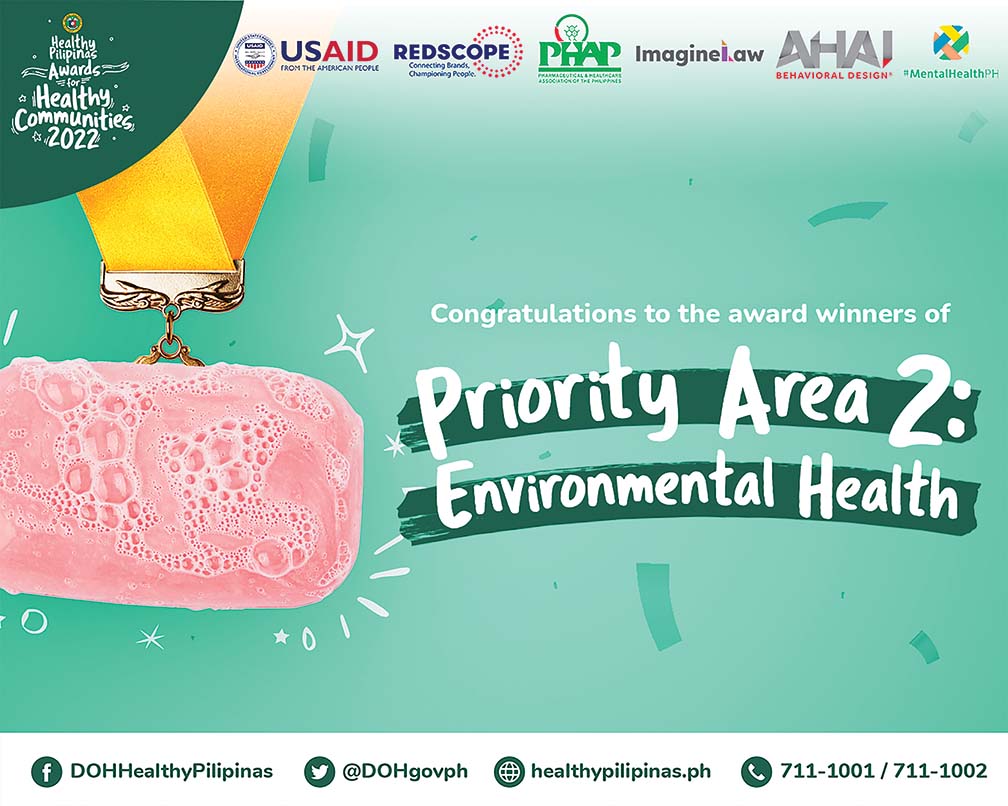Borbon, Cebu—Borbon Disaster Risk Reduction and Management in Health and Health Emergency Management Services
The “Borbon Disaster Risk Reduction and Management (DRRM) Plan in Health” is an initial step in the protection of Borbon residents against man-made or natural disasters. The program aims to coordinate and institutionalize health emergency preparedness, response and recovery as well as promote interoperability among the different sectors in the Municipality of Borbon.
With the concrete DRRMH Plan, the implementation of its policies prompted the construction and licensing of functional equipment during the pandemic, including the provision of supplies and medicines for isolated households. The activation of the DRRMH plan during typhoon Odette resulted in the zero loss in life and properties in the municipality.
Carmen, Surigao del Sur—Kugi Uswag Carmen: Annual Search for Environmental and Sanitary Best Practices
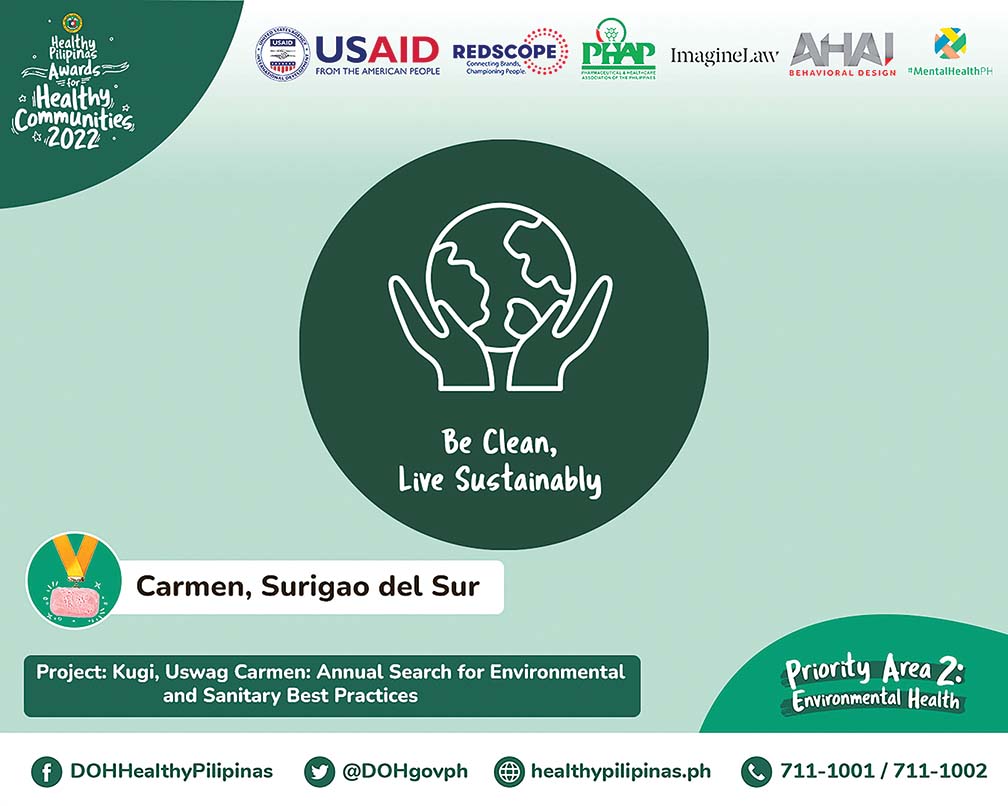
The local government of Carmen is steadfast in its commitment to protect the environment and promote ecological balance within its domain.
A 5th class municipality in the province of Surigao del Sur, it prioritizes the environment and health of its people and believes that change comes from the empowerment of the community.
The LGU of Carmen established the Annual Search for Environmental and Sanitary Best Practices (SESBP) that regularly monitors and evaluates households to have a complete sanitary facility by recognizing the effort of the community.
Prosperidad, Agusan del Sur—OPLAN ZOD: Toilets for Every Juan
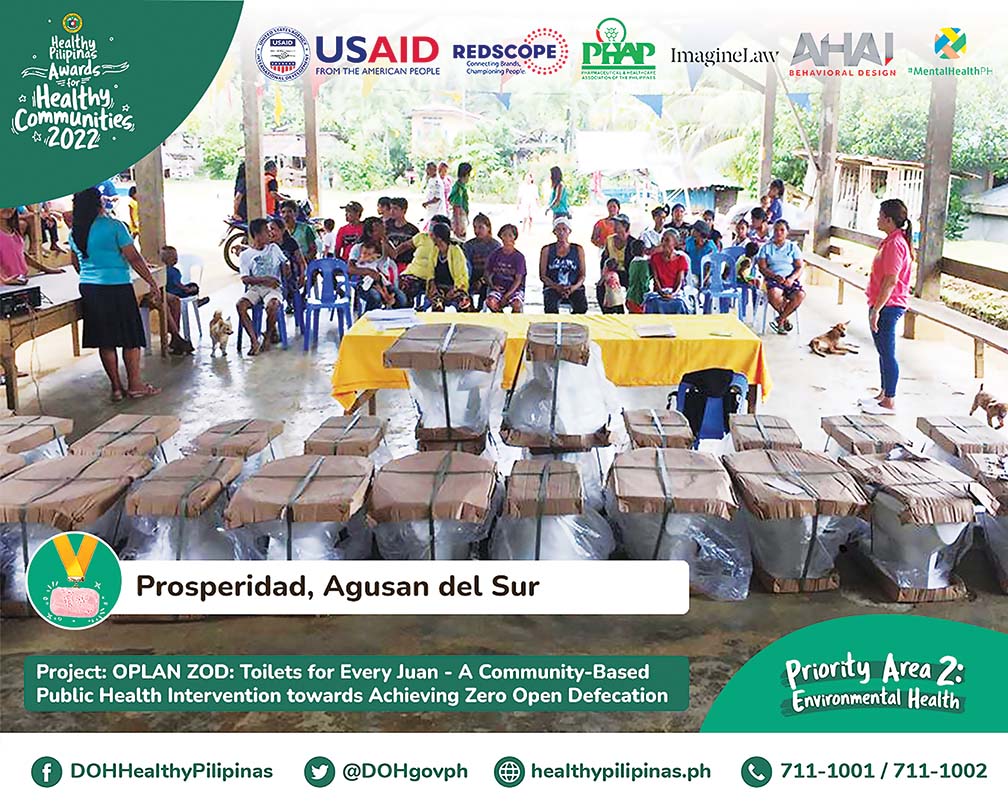
In 2016, only 85.91% of the total number of households (11,603 out of 13,506) in the municipality of Prosperidad had sanitary toilets. Almost 6% (760) of the households had unsanitary toilets and 7.28% (983) of households had none at all (Field Health Services Information System or FHSIS, 2016). Reports indicated that in 2015, diarrhea was the 8th leading cause of morbidity with 13.21 cases per 10,000 population in the municipality. Furthermore, diarrhea was also the 5th leading cause of infant mortality with 2.13 cases per 10,000 population. In 2020, diarrhea escalated to being the 3rd leading cause of infant morbidity with 1.02 cases per 10,000 population.
The primary strategic objective of the project was to attain a Zero Open Defecation status municipality and improve the population’s health status. OPLAN ZOD: Toilets for Every Juan is a community-based public health intervention designed for the 32 barangays of Prosperidad, Agusan del Sur.
The intervention has four crucial components: 1. Provision of Toilet Facilities; 2. Creation of Community Health Teams (CHT); 3. Establishment of Public Health Policy Support; and 4. Multi-Sectoral Community-Based Educational Campaign.
The impact of the implementation of core strategies showed promising results based on the FHSIS report in 2021. It revealed that households with sanitary toilets improved to 96.98%. Data also revealed a decrease of 2.78% in households with no toilets Households with unsanitary toilets in 2021 also decreased to 0.23%. The impact of this project also manifested beneficially on the populations health status as diarrhea was no longer included in the leading causes of morbidity and leading causes of infant morbidity in 2021.
Quezon City—Camp Coordination and Camp Management Program
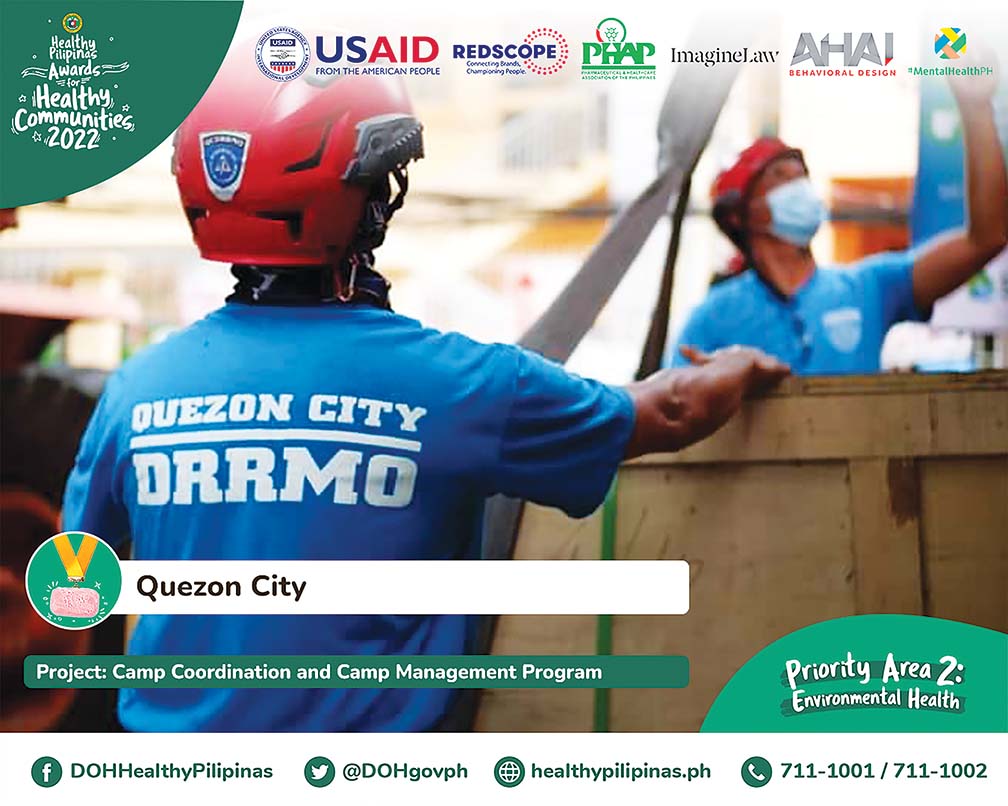
Quezon City, being the largest and most populous city in Metro Manila, upholds great responsibility in warranting the safety and immediate recovery of its citizens while building a disaster-resilient community. Due to the size of the city, it is vulnerable to various hazards—natural, human-induced, technological and biological.
Since 2017, the Quezon City government has proven its excellent track record in the implementation of disaster risk reduction and management programs, taking pride in its unwavering commitment to building inclusive, sustainable, and evidence-based community resilience.
The battle against time to prevent the community spread of COVID-19 has heightened the complexity of the Quezon City government’s duties in ensuring disaster preparedness. However, the City Mayor’s directive of “serving with the heart and planning with the head” has guided city planners and disaster management practitioners to establish informed actions despite the challenges brought about by the pandemic.
As early as June 2020, the Quezon City government issued guidelines that incorporated public health standards to standard disaster preparedness measures. The guidelines highlighted the promulgation of public health standards in the following areas:
- Disaster and Evacuation Planning
- Stockpile of relief goods
- Safety of responders and evacuees
- Camp Coordination and Camp Management
- Health Monitoring
- Distribution of Relief Goods
- Responsibility of Barangays
In preparing Quezon City communities for possible disasters amidst the pandemic, the city government placed priority in mainstreaming public health in conducting pre-disaster needs assessment, establishing stronger mechanisms for forecast-based early actions, and bolstering local capacities. The program has so far benefitted 8,581 families in 2020 and 2021and has made it possible for the city to accomplish zero casualties during natural-induced hazard incidents in Quezon City.
Sta. Praxedes Rural Unit—Sapat na Palikuran, Sagot sa Malinis na Kapaligiran
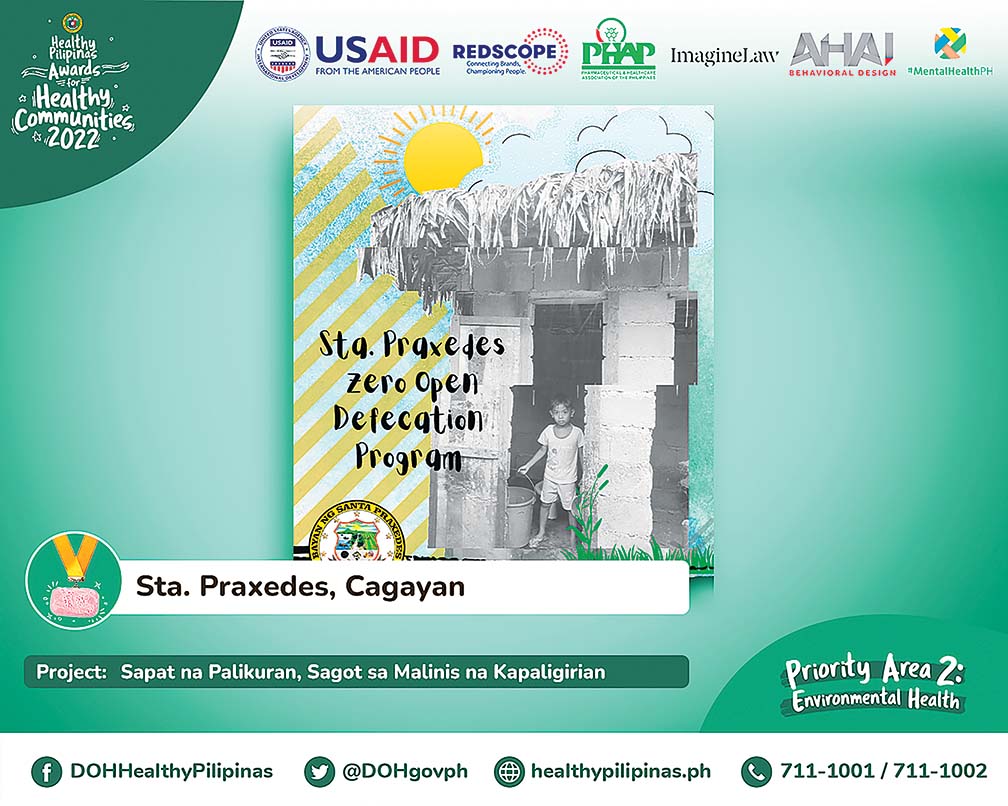
The SAPAT NA PALIKURAN, SAGOT SA MALINIS NA KAPALIGIRAN program of the municipality of Sta. Praxedes, Cagayan Valley is part of the “Bayanihan Para sa Palikuran program” that organizes groups of men in building septic tanks for households to have their own toilet facilities. The program aims to motivate the people to abandon open defecation and adopt sound sanitation practices.
The program targets to improve the overall sanitation of the municipality by decreasing if not totally eliminating open defecation practices through the conduct of health education and construction of toilet facilities.

In 2021, the program was able to decrease the number of households practicing open defecation from eight to three households and was able to achieve the Zero Open Defecation target of 9 out of 10 Barangays. The remaining open defecation practices involved the Agta community which is influenced by cultural practice. This year, the municipality is aiming to construct more Communal Toilets Facilities in the municipality to further decrease the risk of open defecation.

